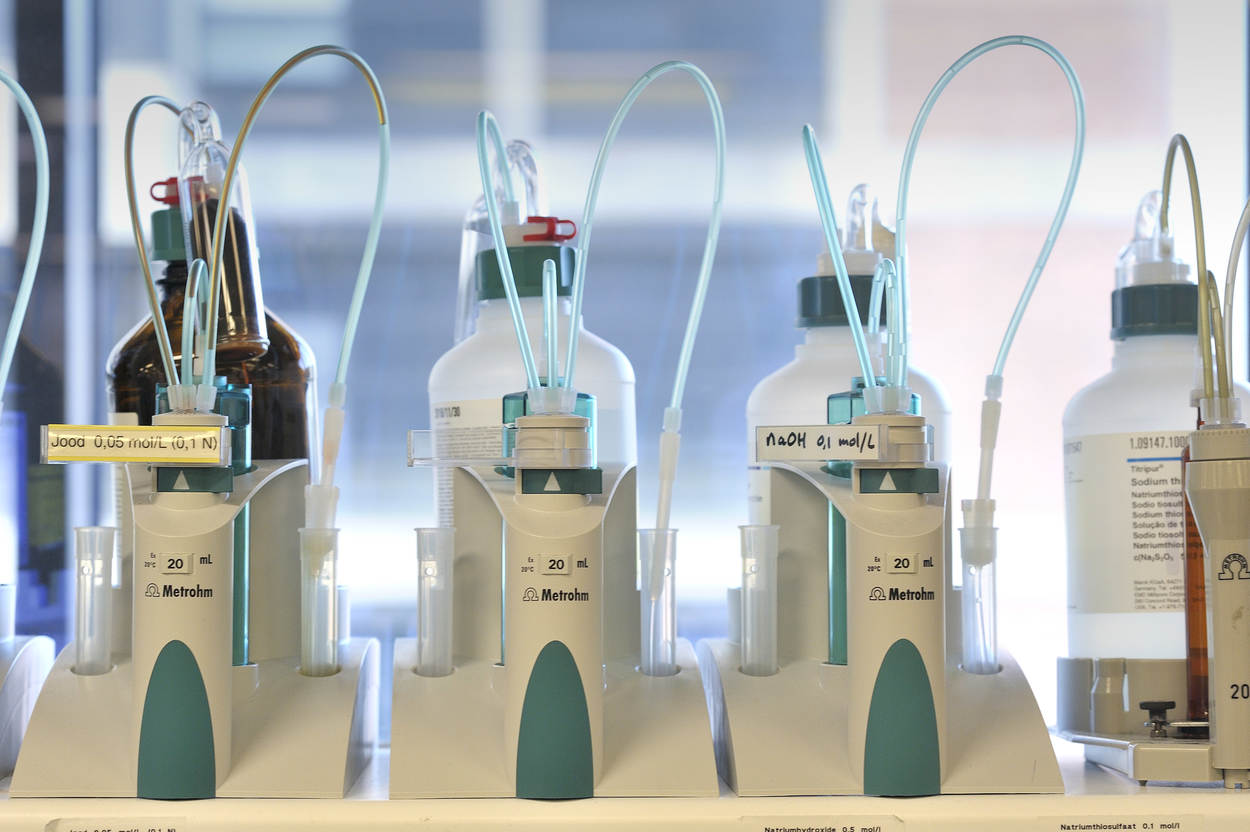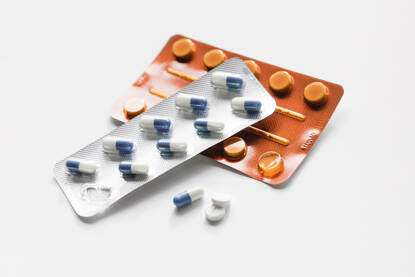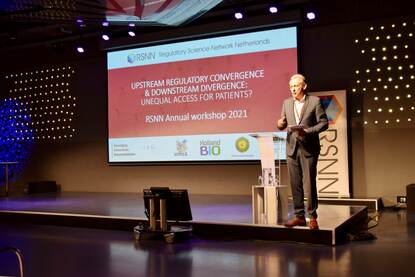
Jessica van der Hoek: CAR T-cell therapy: from design to clinical application
Project of Jessica van der Hoek, Master Cancer, Stem Cells & Developmental Biology student of Utrecht University. Jessica did her research internship at the Medicines Evaluation Board (MEB) from April 2021 to October 2021. Her supervisors were Tineke van den Hoorn (MEB), Carla Herberts (MEB) and Marcel Kwa (MEB).
For six months, I have been working on chimeric antigen receptor (CAR) T-cell products. While response rates following CAR T-cell infusion are relatively high, not all patients respond to treatment and ideally the possibility to respond can be determined in advance of CAR T-cell administration. The aim of the study was to compare preclinical development and pharmacovigilance programs of currently available CAR T-cell products. Moreover, the aim was to investigate the impact of pre- and post-infusion conditions in relation to clinical outcome, to identify parameters requiring specific attention in regulatory procedures.
Background
CAR T-cells are genetically engineered T-cells expressing a receptor that recognises specific tumour antigens in order to activate cytotoxic activity against tumour cells. This type of immunotherapy has shown great potential in treatment of haematological malignancies. Nonetheless, this therapy is associated with many toxicities such as cytokine release syndrome and neurologic events. Research is focused on improving efficacy and safety of CAR T-cells and targeting novel antigens and disease types. To date, four CAR T-cell therapies have been approved by the European Medicines Agency, meanwhile, many CAR T-cell products are in development. Further optimalisation of preclinical and clinical development and pharmacovigilance plans could accelerate the development and facilitate assessment of novel CAR T-cell products.
Methods
In this study, data was collected from applicants’ submitted data of registered CAR T-cells products, products during the marketing authorisation procedure and scientific advice reports of CAR T-cell products in the developmental phase. The following registered products were included for clinical analysis (Kymriah®, Yescarta®, Tecartus® and Abecma®). Patient characteristics (gender, age, weight, BMI, performance status, LDH level at screening), batch specifications (potency, vector copy number, cell viability, transduction efficiency, dose) and cellular kinetics (Cmax, AUC) were interrogated for associations with clinical response. For univariable analysis, binary logistic regression was used to evaluate the relation between covariates and clinical response.
Results
All authorised CAR T-cell products, and CAR T-cell products in development that went for scientific advice, were all indicated for the treatment of hematologic malignancies, but diverged in CAR constructs (scFv, hinge/transmembrane and co-stimulatory domains) and the design of vectors (origin, promotor, and self-inactivation and replication competence). Products in development appeared to be slightly diverse with regard to construct and viral vector design in order to increase the efficacy and safety of the treatment. Even though for all products preclinical studies were present to examine specificity and potency, an extensive diversity in study design and readout was observed. Therefore, results should be interpreted per product and should not be compared across CAR T-cell therapies. None of the patient characteristics and pre-infusion variables revealed a consistent relation to clinical response across the four products. Nevertheless, the analyses per product did reveal some variables which were significantly associated with outcome. As an example, for Kymriah® and Abecma® females were more likely to respond to CAR T-cell treatment than males (odd ratio=2.372, 95%CI=1.165-4.831, p=0.017, and 2.466, 95%CI=1.049-5.795, p=0.038 respectively). Post-infusion CAR T-cell levels were associated with clinical outcome. Responding patients experienced higher Cmax and AUC0-28d values in comparison to non-responders, for all products with odds ratios varying between 2.149 and 13.81. The CAR T-cell products had great overlap in reported safety concerns. Serious neurologic adverse reactions, cytokine release syndrome, cytopenia, infection and hypogammaglobulinemia were described as identified risks for all therapies and the long-term safety of CAR T-cell therapy was outlined as missing information. The design of pharmacovigilance plans was comparable between products and addressed the majority of the safety concerns.
Conclusion
The results of this exploratory analysis reveal promising advancements of CAR constructs, however, the comparison between CAR T-cells was complicated by differences in the conduct of the preclinical studies for the different CAR T-cell products for activity and safety of the products. Pre-infusion variables do not seem to be significantly associated with clinical outcome, in contrast to post-infusion parameters who revealed a strong relation to response. Overlap in safety profiles and related pharmacovigilance activities highlights the comparable mode of action of products. In conclusion, efforts to minimise discrepancy in preclinical and clinical studies should be made to be able to compare CAR T-cell products, which may accelerate regulatory assessment of these therapies.

In February 2022 Puck started working on a project at the MEB, supervised by Peter Theunissen. In this project, she will analyse reproductive toxicity studies, compare effects between different species and different pharmacotherapeutic groups, and relate this to human exposure levels. The goal of this project is to reduce animal testing for future development of pharmaceuticals.
Puck Roos: Evaluation of enhanced pre- and postnatal development studies for the safety assessment of monoclonal antibodies
Project of Puck Roos, Master Drug Innovation student at Utrecht University (UU). Puck did her research internship at the Medicines Evaluation Board (MEB) from April 2021 to October 2021. Her supervisors were Peter van Meer (MEB), Peter Theunissen (MEB) and Hsiaotzu Chien (MEB).
In October 2021, I completed my six-month internship at the MEB. During my internship I researched the use of enhanced pre- and postnatal development (ePPND) studies for the assessment of monoclonal antibodies (mAbs).
Background
Embryofetal development (EFD) and PPND studies are used to evaluate the safety of medicinal products during pregnancy. For some biopharmaceuticals, the only relevant test species are non-human primates. In humans and non-human primates, placental transfer of mAbs predominantly takes place in the second and third trimester of pregnancy (the period of growth and maturation) rather than during the first trimester (organogenesis). Therefore, for these products the endpoints of EFD and PPND studies can be combined into one enhanced PPND (ePPND) study. This would contribute to the reduction of animal studies. However, due to the high specificity of mAbs for their target, most adverse effects are related to their pharmacological action, and these effects could be predicted when the target biology is well-understood. Furthermore, repeat-dose toxicity studies can give an indication of whether developmental toxicity is expected to occur. Therefore, ePPND studies might not be needed for every mAb in development. In this study, we analysed developmental toxicity studies conducted for the safety assessment of mAbs, aiming to identify criteria that allow prospective evaluation of the need for ePPND studies.
Methods
We analysed all marketing authorisation applications of mAbs which received or were refused marketing authorisation between 01-10-1998 and 01-08-2021 through the centralised procedure of the European Medicines Agency. We obtained information about mAb characteristics, study design of EFD, PPND and ePPND studies, and study results from toxicology summaries, study reports and assessment reports.
Results
In total, our dataset included 97 developmental toxicity studies that had been conducted for 60 mAbs. For the majority of mAbs (46 mAbs, 77%) no findings of human concern were identified in developmental toxicity studies. For 4 mAbs, the observed effects were classified as equivocal as these findings were considered of human concern during the assessment procedure but deemed debatable by two regulators who were supervising this internship project. For 6 mAbs, the identified findings were deemed of human concern and related to their pharmacological action. These effects were predictable. For 2 mAbs, developmental toxicities of concern were observed, accompanied by maternal toxicity. Lastly, unpredictable findings of human concern were seen in 2 cases (3%).
Conclusion
In conclusion, developmental toxicity was identified for only a small proportion of mAbs and most of these effects were related to their pharmacological action, or the assessment of these toxicities was confounded by maternal toxicity. We propose that by assessing the totality of the evidence, including target biology and mechanism of action, a weight-of-evidence analysis could be used to identify mAbs for which ePPND studies are likely or unlikely needed. Furthermore, a model was developed as a tool to assist in such assessment. This could reduce animal testing, lower costs, and shorten the process of drug development.

Nora Al-Mugoter: The Role of Patient-Reported Outcomes in Marketing Authorisation Applications and Product Labelling (2018-2020)
Project of Nora Al-Mugoter, Master Pharmacy student of Utrecht University (UU). She did her research internship at the Medicines Evaluation Board (MEB) from May 2021 to October 2021. Her supervisors were Peter Mol (MEB/UMCG), André Elferink (MEB) and Sieta de Vries (UMCG).
In November 2021, I completed my six-month Masters of Pharmacy research-internship at the MEB. Under supervision of André Elferink, Peter Mol and Sieta de Vries I analysed the use of Patient-Reported Outcomes (PROs) in European Public Assessment Reports (EPARs).
Background
PROs are a fairly new concept in which the outcomes come directly from the patient without being interpreted by others e.g., the patient’s clinician. PROs assess the patient’s perspective concerning a disease and the impact of its treatment. Currently it is unclear how often PROs are utilised as study endpoints in clinical trials and if these results contribute to the benefit-risk balance assessment, and adds to the patient information i.e., product labelling. It is also unclear which product determinants, such as disease category and study design, influence PRO use.
Method
Medicinal products submitted to and assessed by the European Medicines Agency (EMA) between January 1, 2018 and December 31, 2020 were evaluated for use of PROs a primary and/or secondary endpoint in their main clinical studies and if these PROs were mentioned in the benefit-risk balance, the effect table and SmPC of the EPARs. The EPAR contains hundreds of detailed pages with useful and transparent information concerning the evaluation process of the medicinal product. The benefit-risk discussion of the EPAR is accompanied by the effect table, which presents the most essential results for the approval or refusal of the product.
Descriptive statistics was used to analyse this. In addition, we explored if PROs contribution to the effect table and SmPC depended on the type of treatment, disease area and the strength of evidence, i.e., if the PROs were evaluated in a blinded study. Binary logistic regression and the Chi-Square test were used to explore possible associations.
Results
A total of 149 medicinal products were included. Of these, 84 (56.40%) mentioned PROs; 11 (7%) as primary endpoint and 74 (49.66%) as secondary endpoints. Overall, 37 (25%) and 41 (29,50%) products mentioned PROs in their effect table and SmPC, respectively. PROs were used significantly more as a secondary endpoint (χ2 (2) = 13.490, p < 0.015) and in the SmPC 9 (χ2 (2) = 8.428, p < 0.015) for products for chronic- compared to acute- and preventive treatment. Furthermore, the disease category played a significant role in PRO use. For example, for the 6 products evaluated in respiratory conditions PROs were mentioned in the effect table and SmPC. In contrast to infectious disease, where of the 20 product PROs were only mentioned one time in the effect tables and not at all in the SmPC. PROs from blinded studies contributed significantly more to patient care decision-making compared to open-label studies (OR 3.8 95% Cl 1.802-8.167, p < 0.01).
Conclusion
In 25% of medicinal products approved between 2018-2020, PROs played an important role in the regulatory decision-making. Furthermore, different product determinants play a role in the utilisation and contribution of PROs to the assessment and patient care decision-making.











